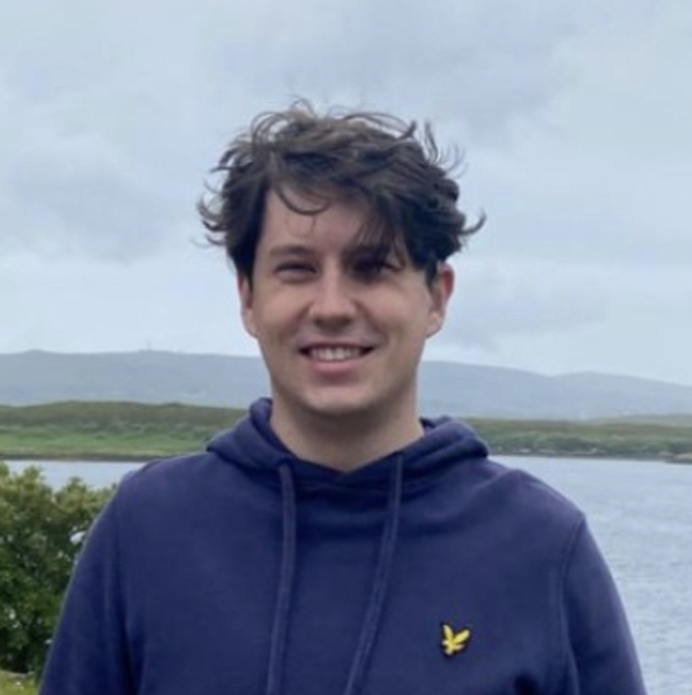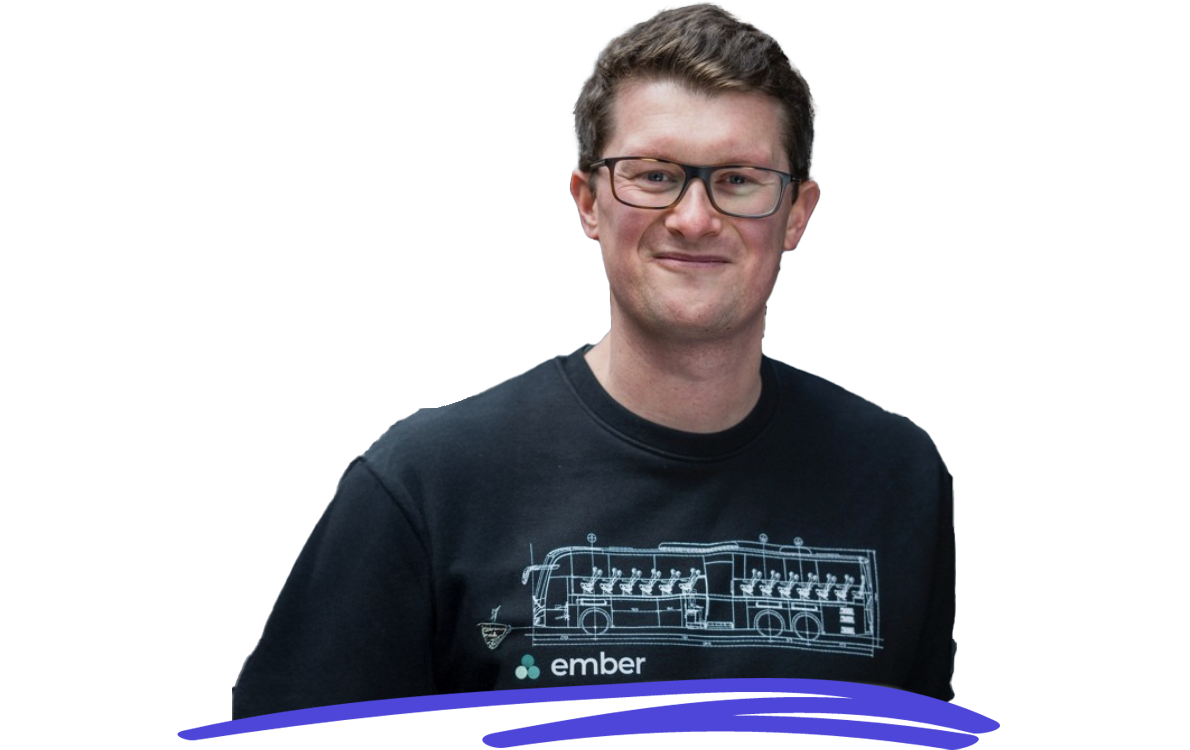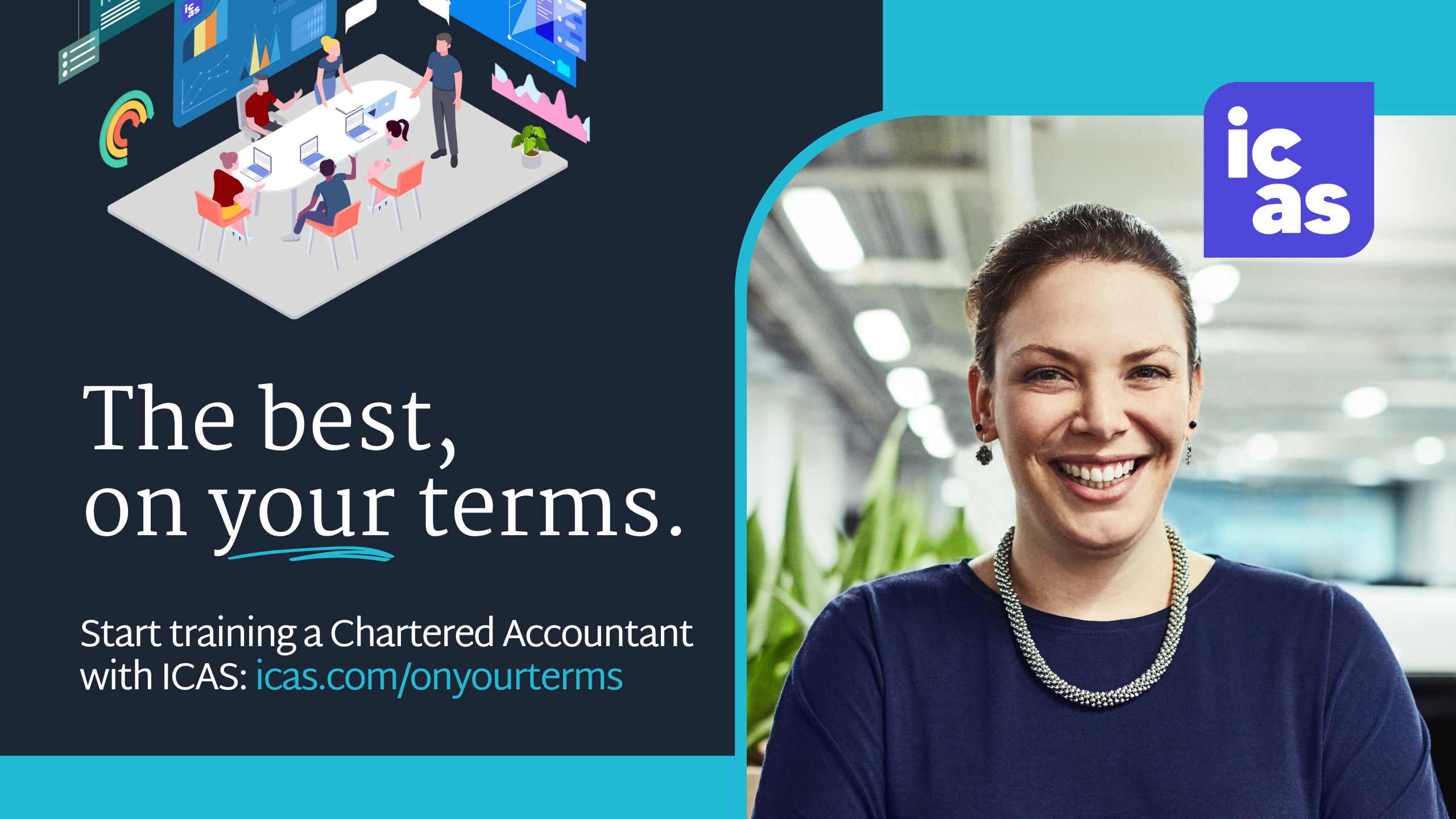MEET THE ATO
He’s electric
When the UK's first all-electric intercity bus company, Ember, needed to expand its team, Head of Finance Kenneth Rocke CA opted to look to the future. Instead of hiring a part-time assistant, he took on a CA student – and the move is already paying dividends, he tells Ryan Herman

MEET THE ATO
He’s electric
When the UK's first all-electric bus intercity company, Ember, needed to expand its team, Head of Finance Kenneth Rocke CA opted to look to the future. Instead of hiring a part-time assistant, he took on a CA student – and the move is already paying dividends, he tells Ryan Herman

When Kenneth Rocke CA moved with his wife from Edinburgh to Auckland in 2018, he took a job as an accountant at the digital agency Rush. It turned out to be a transformative experience, shaping his perspective of what a CA can be.
“Working in tech opened my eyes to what’s possible when you’re surrounded by genuinely passionate people who push boundaries because they love what they’re doing,” he says. “I was also fortunate to have the CEO and CFO as mentors who invested real time in developing me. Those experiences shape how I think about my role now – I want to create that same environment for the next generation of CAs and pay forward what I’ve experienced.”
In 2021, Rocke returned to Edinburgh, where the following year he joined Ember, the UK’s first all-electric, intercity bus service. Sustainability is one part of Ember’s mission, and one way the company aims to get people out of cars and on to buses is by improving the customer experience.
“On the face of it, Ember could be viewed as just another intercity bus operator, but at our core we are a technology company,” says Rocke. “We’re building our own operating system, Ember OS, and our vision is to significantly change the dynamics of intercity coach travel and provide the best customer experience through the use of technology.”
“I didn’t realise how flexible the new ICAS syllabus is, and how the programme is structured so you can pick and choose each quarter which course you want the student to be enrolled in”
One of the few things that tends to unite people across the UK is dissatisfaction with our transport networks, whether due to its cost, reliability or customer service. Ember has what Rocke calls a “full stack” approach, which means doing everything in-house, giving the company ultimate control of the user experience.
“We’re developing our own charging hubs, we own our vehicles and operate our own routes, which is actually quite unusual. Other national brands contract out services to smaller operators, and that fragmentation of the market is definitely to the detriment of the customer experience,” he says.
Fleet-footed
With Ember, Rocke explains, you have vehicle tracking, demand-responsive stops, instant refunds for being more than 30 minutes late, flexible cancellation policies, and a seamless vehicle and shift-allocation algorithm.
When Rocke joined the company in August 2022, Ember owned eight coaches. That now stands at 80, with plans to expand the fleet to 140 coaches across Scotland and its sights firmly set on becoming a major player across the UK.
“This time last year we realised that we needed to expand the finance team,” says Rocke. “We could have hired a part-time assistant to process invoices for, say, 20 hours a week. But we thought, no, we’re going to double down on the long-term vision of the company and bring somebody into the team. So let’s take our long-term, full-stack approach and hire a keen graduate.
“I thought there must be a way for me to support a student through ICAS, but I didn’t really know where to start even though I’m a CA. So I went online and learned about the ATO [authorised training office] programme.
“I spoke to Jamie [Ferguson, ICAS Business Development Manager] who was really helpful, so I could understand how the process could work for both Ember and the trainee. I didn’t realise how flexible the new syllabus is, and how the programme is structured so you can pick and choose each quarter which course you want the student to be enrolled in, which I think is fantastic.”
Within three months of that first conversation with ICAS, Ember had become an ATO. “Having done that, I realised just how much had changed in the 10 years since I began my journey as a CA,” says Rocke.

CA student Fin Davidson
CA student Fin Davidson
“Fin Davidson is our trainee and his mindset is incredible. He’s grown up in what feels like a different age of technology. He’s interested in using AI, looking at other ways to do things and trying different technological solutions, even if he doesn’t have all the knowledge to begin with.”
CAs reading this will know that in the past a training office would have to release the trainee for six weeks to study and sit their exams. For a small but rapidly growing team like Ember, losing Davidson for that long simply wouldn’t have been an option. But the new learning model means students can sit exams at a time that suits them and the ATO.
Rocke adds: “There is a vetting process to register as an ATO and we were interviewed by an independent CA. I was pleased about that because it is important that ICAS upholds its standards both within the profession and for the qualification.”
After just over a year of first-hand experience helping to manage a CA trainee in the workplace, Rocke can see the benefits for other would-be ATOs. “When you blend classroom and online learning with day-to-day experience over that period of three years, which is intense, there is a clear value-add for businesses like Ember to take on an ICAS trainee,” he says.
Indeed, you can be a company with cutting-edge technology, but you will still need a CA to provide that layer of professional rigour on top. To illustrate this point, Rocke explains how Ember pays its drivers: “Because we store our own data from Ember OS, we can create and process payroll for about 200 drivers in 30 minutes every week. For me, thinking back to my audit days, that’s almost unbelievable. And I’m pretty confident in two years’ time we’ll be paying 600 to 800 drivers in the same amount of time, all down to the full-stack approach we have taken when building the business.
“So, if you put a qualified CA in the right seat, with the right capabilities, you can create serious efficiencies. The technology obviously plays an important role, but the core thing is the CA qualification, because you still need a person to design the solution, create the error checks and understand the regulations that sit underneath everything, whether it’s payroll, asset tracking, creating accounting journals or tax. That core knowledge continues to be absolutely vital.”
Learn more about how to make your workplace an ICAS ATO
When Kenneth Rocke CA moved with his wife from Edinburgh to Auckland in 2018, he took a job as an accountant at the digital agency Rush. It turned out to be a transformative experience, shaping his perspective of what a CA can be.
“Working in tech opened my eyes to what’s possible when you’re surrounded by genuinely passionate people who push boundaries because they love what they’re doing,” he says. “I was also fortunate to have the CEO and CFO as mentors who invested real time in developing me. Those experiences shape how I think about my role now – I want to create that same environment for the next generation of CAs and pay forward what I’ve experienced.”
In 2021, Rocke returned to Edinburgh, where the following year he joined Ember, the UK’s first all-electric, intercity bus service. Sustainability is one part of Ember’s mission, and one way the company aims to get people out of cars and on to buses is by improving the customer experience.
“On the face of it, Ember could be viewed as just another intercity bus operator, but at our core we are a technology company,” says Rocke. “We’re building our own operating system, Ember OS, and our vision is to significantly change the dynamics of intercity coach travel and provide the best customer experience through the use of technology.”
“I didn’t realise how flexible the new ICAS syllabus is, and how the programme is structured so you can pick and choose each quarter which course you want the student to be enrolled in”
One of the few things that tends to unite people across the UK is dissatisfaction with our transport networks, whether due to its cost, reliability or customer service. Ember has what Rocke calls a “full stack” approach, which means doing everything in-house, giving the company ultimate control of the user experience.
“We’re developing our own charging hubs, we own our vehicles and operate our own routes, which is actually quite unusual. Other national brands contract out services to smaller operators, and that fragmentation of the market is definitely to the detriment of the customer experience,” he says.
Fleet-footed
With Ember, Rocke explains, you have vehicle tracking, demand-responsive stops, instant refunds for being more than 30 minutes late, flexible cancellation policies, and a seamless vehicle and shift-allocation algorithm.
When Rocke joined the company in August 2022, Ember owned eight coaches. That now stands at 80, with plans to expand the fleet to 140 coaches across Scotland and its sights firmly set on becoming a major player across the UK.
“This time last year we realised that we needed to expand the finance team,” says Rocke. “We could have hired a part-time assistant to process invoices for, say, 20 hours a week. But we thought, no, we’re going to double down on the long-term vision of the company and bring somebody into the team. So let’s take our long-term, full-stack approach and hire a keen graduate.
“I thought there must be a way for me to support a student through ICAS, but I didn’t really know where to start even though I’m a CA. So I went online and learned about the ATO [authorised training office] programme.
“I spoke to Jamie [Ferguson, ICAS Business Development Manager] who was really helpful, so I could understand how the process could work for both Ember and the trainee. I didn’t realise how flexible the new syllabus is, and how the programme is structured so you can pick and choose each quarter which course you want the student to be enrolled in, which I think is fantastic.”
Within three months of that first conversation with ICAS, Ember had become an ATO. “Having done that, I realised just how much had changed in the 10 years since I began my journey as a CA,” says Rocke.

CA student Fin Davidson
CA student Fin Davidson
“Fin Davidson is our trainee and his mindset is incredible. He’s grown up in what feels like a different age of technology. He’s interested in using AI, looking at other ways to do things and trying different technological solutions, even if he doesn’t have all the knowledge to begin with.”
CAs reading this will know that in the past a training office would have to release the trainee for six weeks to study and sit their exams. For a small but rapidly growing team like Ember, losing Davidson for that long simply wouldn’t have been an option. But the new learning model means students can sit exams at a time that suits them and the ATO.
Rocke adds: “There is a vetting process to register as an ATO and we were interviewed by an independent CA. I was pleased about that because it is important that ICAS upholds its standards both within the profession and for the qualification.”
After just over a year of first-hand experience helping to manage a CA trainee in the workplace, Rocke can see the benefits for other would-be ATOs. “When you blend classroom and online learning with day-to-day experience over that period of three years, which is intense, there is a clear value-add for businesses like Ember to take on an ICAS trainee,” he says.
Indeed, you can be a company with cutting-edge technology, but you will still need a CA to provide that layer of professional rigour on top. To illustrate this point, Rocke explains how Ember pays its drivers: “Because we store our own data from Ember OS, we can create and process payroll for about 200 drivers in 30 minutes every week. For me, thinking back to my audit days, that’s almost unbelievable. And I’m pretty confident in two years’ time we’ll be paying 600 to 800 drivers in the same amount of time, all down to the full-stack approach we have taken when building the business.
“So, if you put a qualified CA in the right seat, with the right capabilities, you can create serious efficiencies. The technology obviously plays an important role, but the core thing is the CA qualification, because you still need a person to design the solution, create the error checks and understand the regulations that sit underneath everything, whether it’s payroll, asset tracking, creating accounting journals or tax. That core knowledge continues to be absolutely vital.”
Learn more about how to make your workplace an ICAS ATO






